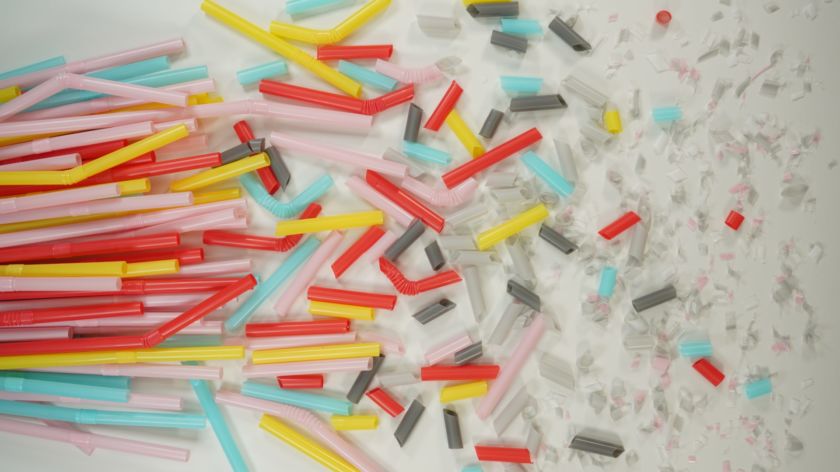-
 Photo: Unsplash.com
Photo: Unsplash.com
Microplastics are everywhere. In food, healthcare products and even in the air. For the first time ever, miniscule bits of plastic were also found in human blood. How damaging are these chemical compounds to humans? And if they are found everywhere, how can we avoid them as consumers?
Researchers at the VU Amsterdam found microplastics in the blood of three quarters of their test subjects. It was already hypothesised that miniscule bits of plastic would find their way into the human body, but because of the small size – about 700 nanometres – this was hard to prove.
Ad Ragas is professor at Radboud University and specialised in the consequences of chemical substances on the environment and humans. He is not really surprised at the results of the research, which were presented in March. ‘We have seen microplastics in the human stomach and liver before. The only route between these organs is the blood,’ Ragas explains.
‘Only the smallest microplastics make their way through the wall of the gastrointestinal wall’
Ragas thinks it is important to have a good look at which specific particles this is about. ‘Most people think that all microplastics are pretty much the same, but there are big differences. Size, for example, varies between 10 nanometres and 1 millimetre. If you compare that to visible distances, we are talking about a centimetre and a football field,’ says Ragas. ‘Only the smallest fraction of microplastics is small enough to go through the gastrointestinal wall and enter your blood.’
Health risks
The important question is whether these plastics are dangerous to humans. That might be possible in two ways, says Ragas. ‘The chemicals inside microplastics could come loose and become toxic.’ He thinks it will not be that bad. ‘Those particles are so incredibly small. How much toxic waste can a particle of 10 nanometres wide contain?’
If microplastics are truly dangerous to us, it is probably due to them being ‘particles’. ‘You could compare it to a bird that swallows large pieces of plastic. That will physically block the gastrointestinal tract, which cause the bird to be unable to eat,’ Ragas explains. ‘On a smaller scale, you can imagine that particles block veins and cause vascular issues, which, for example, is the case when it comes to particulate.’
‘Via the cutting board, your clothing or the carpet: microplastics will enter your food’
Still, microplastics will probably not cause a heart attack, thinks Gabriëlle Kalčíková, professor in chemistry at the university of Ljubljana and lecturer at Radboud Summer School. ‘When you are preparing your food, many particles will enter as well. Via the cutting board, the carpet, or your clothing.’ Furthermore, our immune system is really good at filtering out non-bodily substances, Ragas says. ‘Otherwise we would have found huge chunks of plastic in the bodies of deceased people. That is not the case.’
Keep researching
Still, the researchers think it is wise to stay alert. ‘The reason we are doing research, is for prevention,’ says Ragas. ‘At the moment, we see no dangers of microplastics to public health, but they obviously do not belong in our body.’
Because of this, avoiding the intake of microplastics as much as possible is not a bad idea, even though it is extremely hard, Kalčíková thinks. ‘By now, they are everywhere.’ Plastic water bottles, for example, contain microplastics because of the friction when you take the cap off and put it back on, and because of the heat, plastic tea bags release particles into the warm water. Plastics that are already present in our environment, will also keep degrading into even smaller pieces.
Reducing macroplastics
The best way to avoid microplastics, according to Kalčíková, is to simply use less plastic. ‘Sometimes we throw away a plastic bag after only 5 minutes, without realising what route this bag has taken to get to us.’ Ragas emphasises that we also shouldn’t get rid of all plastic without good alternatives. ‘Replacing a plastic bottle with a glass one is a great idea, but don’t go and wrap raw meat in paper.’
According to Ragas, it’s a positive development that there is now more attention to microplastic in the human body, but the recent research is no reason to panic. ‘I worry more about plastics in nature. We do not know the effects on public health yet, but I feel like ecological disruptions as the result of plastics is a bigger problem than the risks to humanity.’



